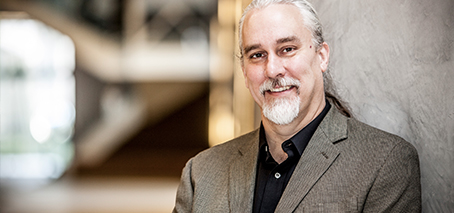As part of National Science Week 2017, Prof. Michael Fuhrer participated in STEM Talks, organised by the Faculty of Education at Monash University, where he discussed his research on topological insulators, which won the 2016 Nobel Prize for Physics.
The full talk (see the link below) covers the energy used in computation, now around 5% of global electricity, as well as the bandgap theory that explains why some materials are electrical insulators while others are electrical conductors. It then explained the theory of topological insulators and FLEET’s mission to use topological materials to create new ultra-low energy electronics.
We’ve broken this video down, thinking that two particular segments might be useful non-mathematical explanations. The first is bandgap theory, which is taught at a second year physics level using some fairly complex mathematics. But a non-maths explanation is possible, and Michael explains how bandgap theory
The second video explains topological insulators. Again, explanations of topological phenomena are usually very maths intensive, but we think Michael’s explanation is pretty good, based only on bandgap theory (above) and the Lorentz force (which explains the movement of a charged particle in a magnetic field – the same force that explains the simple electric motor).
Feedback welcome!
Other STEM Talks can be viewed on the Monash Education YouTube channel.,



